
Jason Christie remembers the moment like it was yesterday. A calm afternoon on Oklahoma’s Stilwell City Lake, the 10-year-old angler witnessed a new-to-him fishing technique that literally changed his mindset.
A truly transformative concept, this technique has played a huge role in the decorated Bassmaster Elite pro’s career. Impressive, but here’s the cool part — Christie says it’s a presentation anyone can learn.
We’re talking about flipping — a method that allows for precise presentations to specific targets. Typically used to sneak baits into areas where big bass hide, flipping is a very versatile technique with year-round potential.
“It’s a technique that works on the hottest days and the coldest days,” Christie said “I have a lot of confidence in it. I feel that if you can get bit flipping, especially around the spawn, you have a chance to do really well because your average fish will be better.
“You’re not going to get a ton of bites, but if you put that bait around enough targets, you’re going to get the right bites.”
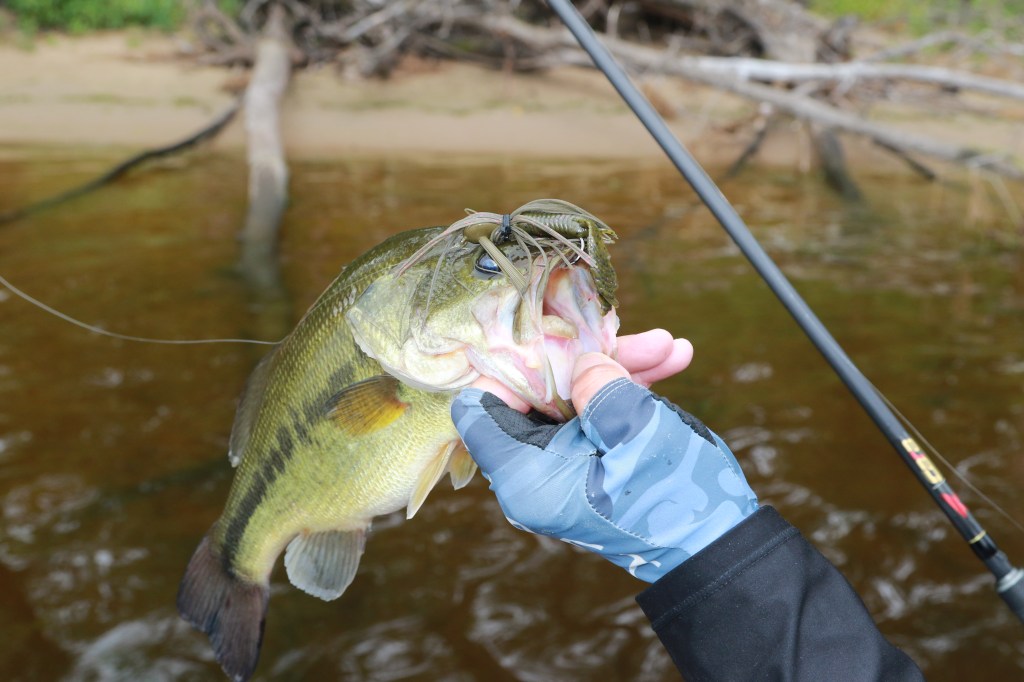
The backstory
The future 5-time Elite winner and 2022 Bassmaster Classic champion’s interest was so great that, right after the fishing trip, he used his savings to buy a flipping outfit. That was the beginning of what would become a dominant force in bass fishing.
“I’d fished a lot up until the point, but it was a lot of casting Beetle Spins and paddle tails,” Christie said. “I was just pond hopping and creek fishing close to home. I finally got to see what fishing was all about.”
As Christie recalls, he and his uncle were fishing a water willow edge and, while he throw his moving baits off the back of the boat, his uncle started making these odd underhand casts. At first, this new technique struck Christie as awkward, but when he saw his uncle lean back and set the hook with impressive vigor, he knew he’d found his calling.
“Ten pitches in, he sets the hook and the whole boat shook; the weeds shook; it was the way he fought and landed that fish,” Christie said. “It took me the whole day to grasp the way he was fishing — dropping the bait where the fish were sitting in heavy cover. The way he was sneaking around and picking out his targets.
“That was the day I fell in love with flipping. I knew that was something I needed to be part of, so when I got home that night, I took the money I had saved up and bought myself a flipping setup.”
Important distinctions
For clarity, we need to pull back and explain some terminology. While the word “flipping” is broadly used to describe the general practice of underhand presentations to relatively close range targets, it’s actually more specific.

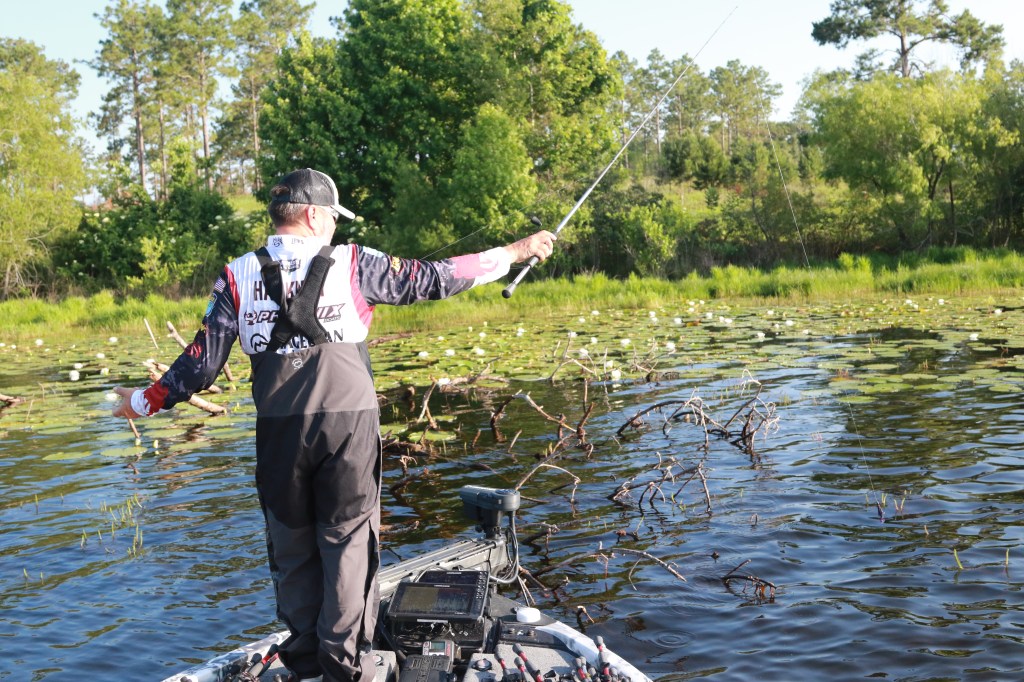
Flipping: Technically, this describes a presentation where the angler opens/disengages the reel, lets out a measured amount of line (typically 1 to 1 1/2 times the rod length) and then closes/engages the reel. To present the bait, the angler uses the hand opposite their reel hand to laterally pull the line and shorten the amount hanging from the rod tip. (Think of this as the back cast, as in the standard overhead cast.)
Dropping and raising the rod tip creates momentum on the bait. As the bait swings forward, the angler releases the line from that lateral grip and this allows the bait to drop into the designated target. After a soak and shake, repeat the process for the next spot — never touching the reel or the handle unless a fish bites.
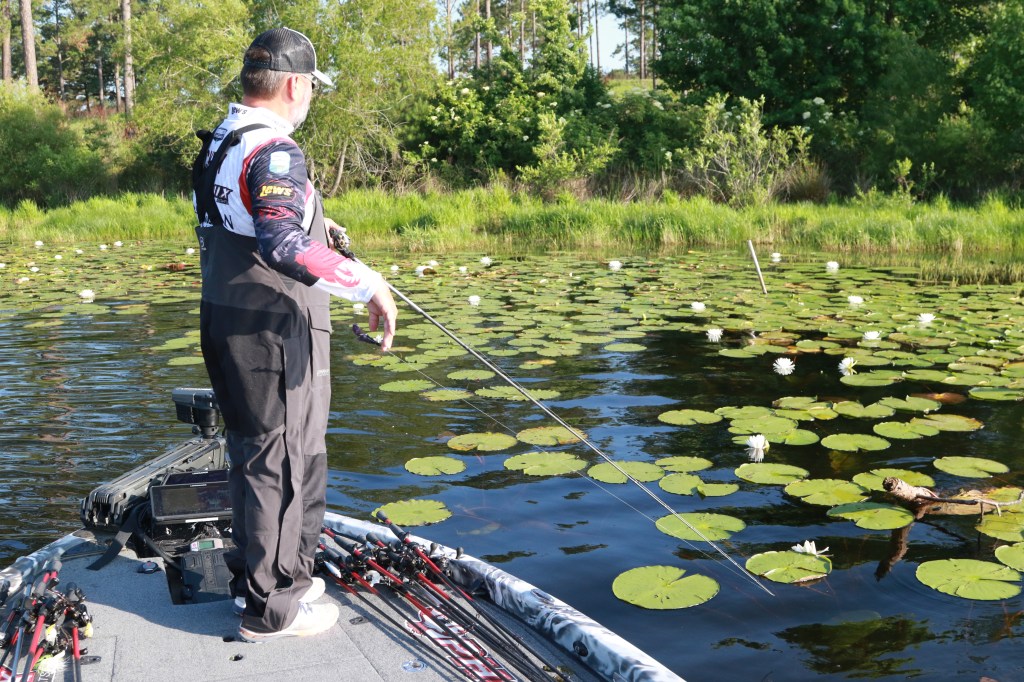
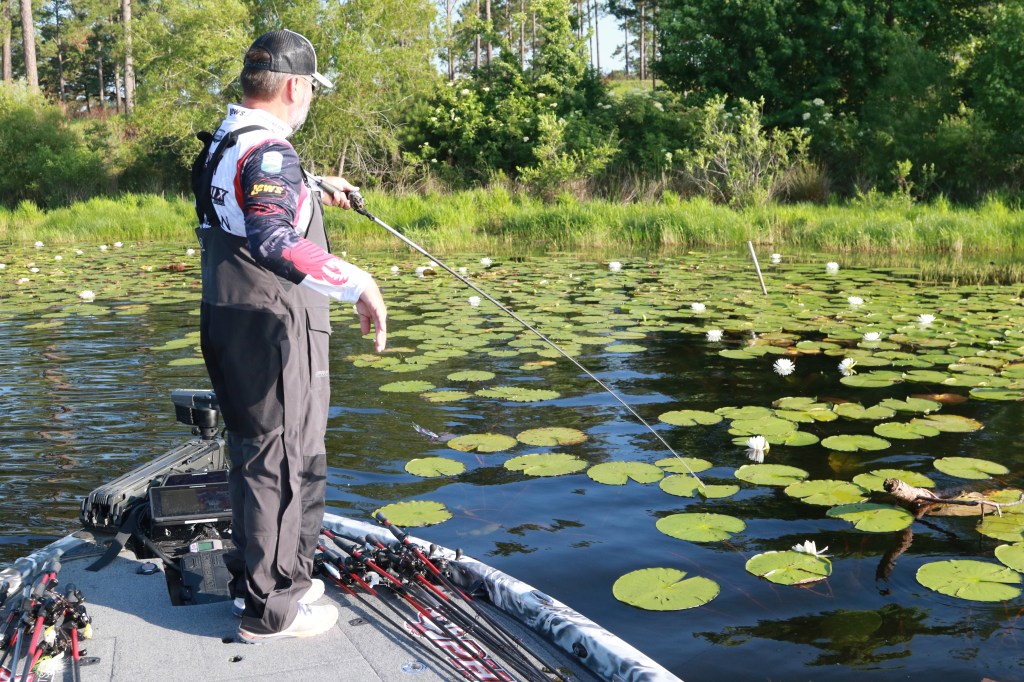
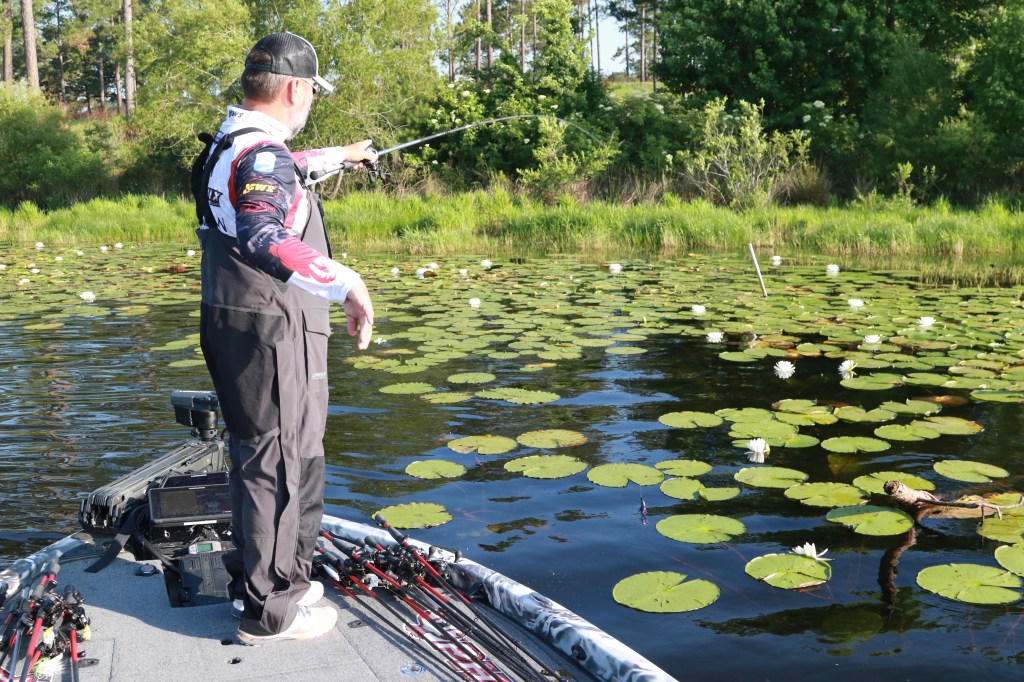
Pitching: Now, the technique that grabbed a young Jason Christie’s attention is actually called “pitching,” but in the majority of cases, advanced anglers still use the old-school term “flipping.” (Confusing, but we’ll quickly clarify.)
Typically done with a baitcasting reel, the distinguishing element of the pitching technique is that the reel is disengaged and engaged on every presentation. Essentially, it’s the same concept as an overhead cast, only with an underhand form that allows for more precise targeting with a softer, quieter entry.
Now, you may see anglers holding their pitching bait in their off hand and releasing it right as they swing the rod tip forward. This helps steady the bait for a direct shot to one side of a stump, a particular branch of a laydown, or an isolated grass clump. For general spots, simply swinging the dangling bait right off the rod tip works fine.

The right technique at the right time
Both flipping and pitching allow you to pick apart promising areas by testing various depths and specific parts of the cover. The former’s best for close range work, typically on a relatively uniform line, such as a dock face or an even reed edge; while the latter allows you to hit spots of varying distance.
“I think the pitching is probably used 98 percent of the time (by tournament fishermen),” Christie said. “You still see guys get on the edge of cover and use the flipping technique, but I don’t want to be that close; I want to be 10-15 feet away so I don’t risk spooking those fish.
“Usually, the bigger fish will be deeper in that cover — whether that’s grass or a dock — so you want to be able to present your bait 5 feet, 10 feet, 15 feet. If someone’s getting started, I’d suggest learning the pitching technique because most of the time, your targets are not as consistent.”
Whatever your preference — maybe you want to have both techniques in your repertoire — Christie said a 5-gallon bucket is your best practice buddy. After falling in love with “flipping,” he spent every free minute practicing his presentations.
Today, literally thousands of flips/pitches later, he can hit a bullfrog between the eyes from 30 feet. (More or less, but he’s really good.)

Tackle the task
Baitcasting gear is ideal for both techniques, but don’t worry if you have yet to master the revolving spool reel — spinning tackle will certainly work. Just consider the differences. For one thing, baitcasters tend to be more accurate, as the line comes directly off the spool, as opposed to exiting in loops from the spinning reel.
In terms of speed, opening and closing a spinning reel’s bail on every pitch takes more time than depressing a baitcaster’s thumb bar and then reeling to re-engage the reel.
Ultimately, it’s always best to learn new techniques with gear that serves you, rather than frustrates you. So if you’re most comfortable with spinning tackle, start there and try both flipping and pitching techniques until you gain enough confidence to step into baitcasting gear.
Christie typically flips with a 7-foot-4 medium-heavy rod, but he stresses the importance of size-appropriate tackle. Kids and adults of smaller stature will probably do better with a 6-6 or 6-9 rod, but make sure it has the right blend of fish-whipping backbone and enough tip flexibility for snapping that bait forward.
If you go with baitcasting tackle, choose a low-profile reel that fits well in your hand. Remember, a spinning reel hangs below the rod, while a bait caster sits on top where you basically palm the reel.
“With reel speed (gear ratio), don’t go any less than 7:1, but 8:1 is ideal,” Christie said. “It’s not only for retrieve speed; it’s all about making more pitches in a day. So, the quicker you can retrieve your bait after a pitch, the quicker you can make another one.”
Anglers typically prefer braided main line when fishing in grass, as the thin diameter and raspier surface slices through the weeds when you’re wrestling a fish out of cover. Around laydowns, stumps, or standing timber, you’ll want 18- to 20-pound fluorocarbon, because it’s less likely to pinch into the wood’s tight spots and get stuck than thinner braid.
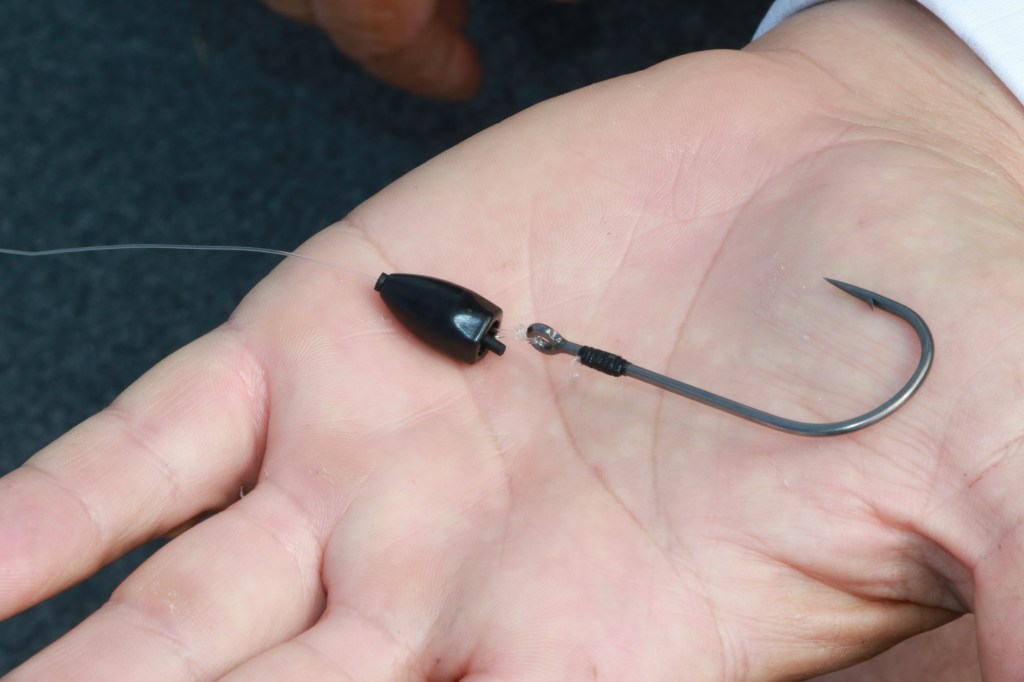
Best baits
Christie’s No. 1 flipping bait is a jig like the 1/2-ounce War Eagle Jiu Jigsu with a chunk trailer. Jigs traditionally attract big bites and the streamlined profile slips in and out of vegetation well and along rocks with lifelike appearance.
For heavier cover, where open hooks are more snag-prone, a Texas-rigged bait works best. Christie prefers his signature YUM Christie Critter on a straight shank hook with a bullet weight sized appropriately for depth and cover density.
Christie’s tip: Be sure to peg your weight (either a bobber stop, or an internal peg). This keeps the weight and bait together and prevents entanglement.
You can use a variety of soft plastics from the popular beaver shape, to crawfish imitators, but one of the easiest and most universally productive flipping baits is a 4- to 5-inch stick worm. Christie always has a 4-inch YUM Dinger rigged with a 1/3-ounce weight, and when they won’t bite anything else, this is often the deal-closer.
As for the hook set, Christie stresses the urgency of separating fish from fortress.
“When you get that bite, make sure your rod is in the 8 o’clock position and put everything you have into that fish,” he said. “Once you get that fish coming, don’t stop. If you give them any slack, they’ll get hung on a limb, or a dock post.
“Don’t play the fish like you would on a treble hook bait. I keep the rod high and keep the fish on top of the water and keep them coming.”




